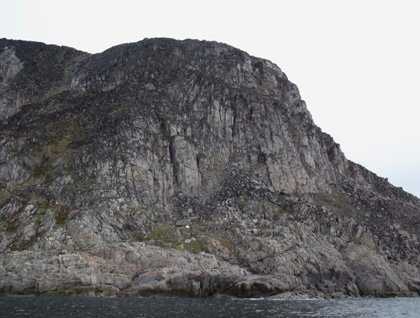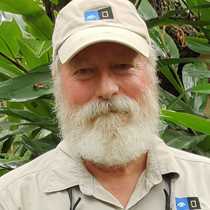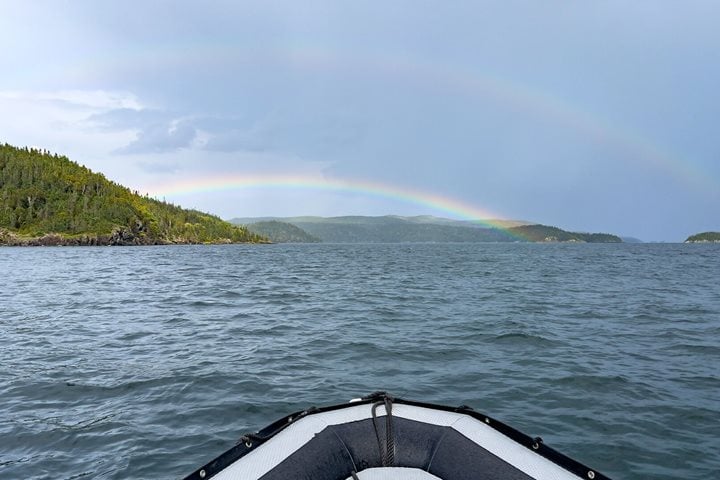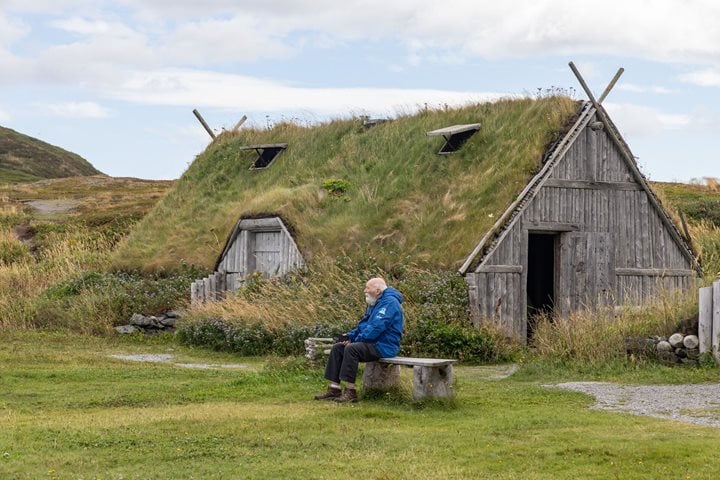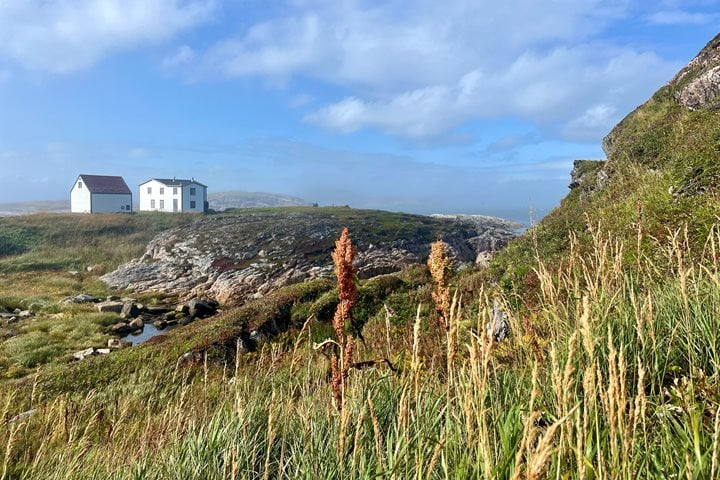Early this morning, we entered Butterfly Bay, which is located on a narrow peninsula in the southeast region of Baffin Island. This is a very rocky area and one can see the ancient exposed bedrock here that is part of the Canadian Shield. Understanding the basics of metamorphism and the concept of geological time make this a very exciting place to explore. We divided ourselves into various groups for different organized hikes out over the lower regions of a broad, glacially-carved valley. Upon landing, we discovered an interesting raised high-energy shingle beach composed of rounded rocks (mostly granites, schists, and gneisses) that protects a lower, boggy, moss-covered area that was strewn with logs and other debris that had floated all the way across the Arctic Basin from Russian rivers only to make landfall here on Baffin Island.
From the ship, it looked like the walking would be pretty easy over moss-covered ground all the way back to a pointed rocky outcrop, where we expected great views of the surrounding terrain and the bay on the far side of the peninsula. We soon found the surface was actually a mixture of rounded boulders and broken-up, fractious rocks with the in-between areas filled in with thick growths of mosses, interspersed with various vascular plants, and cut through in places with meltwater streams and flooded, muddy stretches. The walking was not quite as easy as it appeared from afar. But, we were up to the challenge and the “long hikers” managed to make their way all the way to the chosen summit. Yes, the views were as good as we had hoped. Although no mega fauna was observed, we did see some interesting birds, including common and red-throated loons, redpolls, glaucous gulls, and ravens, as well as regurgitated pellets at the summit from snowy owls. We also saw polar bear footprints and droppings from Arctic hares and lemmings.
By mid-afternoon, we had reached the aptly-named Monumental Island. As our ship approached her anchorage site, we could clearly see two polar bears walking on the steep-sided, rocky island. Their cream color made them stand out against the dark granitic bedrock (see Figures A and B). Both of them watched the ship as she dropped her anchor, but they were also definitely aware of each other. One bear was a large male and the other one was a female, who seemed to have her mind set on avoiding the male. They were both very robust and healthy-looking, in spite of the fact that they were essentially land-locked on this island and had virtually nothing to eat…as far as we knew. They will probably hang out here for another couple months, living off their fat stores, until sea ice reforms in the area. We soon had organized Zodiac tours and set off with the first group and got much closer views of the bears on the island. They were very interested in smelling us, which demonstrated their incredibly well-developed sense of smell (reputed to be much keener than that of a blood hound). Around the shoreline, we also enjoyed watching many black guillemots, several of whom had caught little Arctic cods and/or capelins and were carrying them around in their beaks as if to show off.
A short distance from the main island is a group of low islets, among which we sighted a group of about a dozen walruses. We saw several large adults with impressive tusks, as well as a few smaller individuals with tiny tusks (see Figure C). They seemed very skittish, so we didn’t approach them very closely. These animals obviously have to deal with hunting pressure from Inuit and they showed no inclination to investigate us, like we have encountered in other areas.

